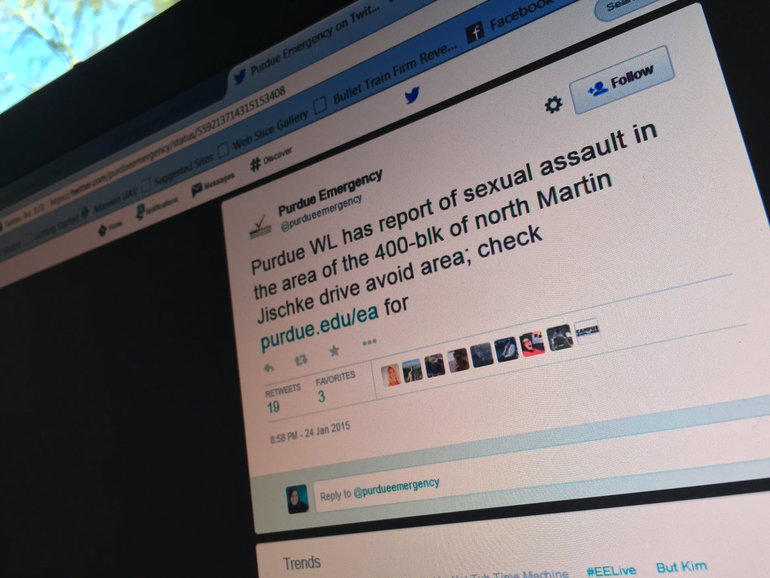A study finds that social media lets campus authorities instantly reach a large percentage of students, who are more likely to comply with emergency notifications received in that manner.
The widespread popularity of social media and associated mobile apps, especially among young people, has potential in public safety, a new study finds.
Use of such sites as Facebook and Twitter has become so significant that universities should strongly consider utilizing them to spread information during campus emergencies, according to a study from the University at Buffalo School of Management called Factors impacting the adoption of social network sites for emergency notification purposes in universities.
Social media not only enables campus authorities to instantly reach a large percentage of  students to provide timely and accurate information during crisis situations, the study states, but sending messages through social networking channels also means students are more likely to comply with emergency notifications received. students to provide timely and accurate information during crisis situations, the study states, but sending messages through social networking channels also means students are more likely to comply with emergency notifications received.
“Social media is especially useful to confirm information students received through other channels, provide additional updates and respond to student feedback,” said Wencui Han, lead study author and a Ph.D. student in the University at Buffalo School of Management. “Social media also allows two-way communication. Campus officials can respond to concerns and provide more detailed instructions, and users can add and share content, helping information spread more rapidly.”
The study recommends that universities not currently using social media for emergency notification about such things as criminal incidents, natural disasters or health-related crises strongly consider adding social media as an additional means of communicating with students.
“Our suggestion is that they use social media as a complementary channel for traditional notification so students can have interaction and clarification on those channels,” said Han. “Using a wide range of notification technologies can help keep students safer during a crisis.”
The researchers also surveyed campus safety managers from 183 universities that do not yet have social networking accounts in place for emergency situations, and found that campuses with higher incident rates were more likely to consider adopting social-networking services for emergency-notification purposes.
The study also found some limitations to getting universities to engage with students via social media.
“There are still a lot of schools out there that are concerned about putting information out on social media,” said Han. “But because social media has become such a big part of young people’s lives and communications, we really encourage schools to consider it.”
The authors note that the most popular social media sites are free to use, making it cost effective for universities to build pages across multiple social channels -- though they should expect potential costs for marketing and monitoring activity.
“Interacting with students on social media imposes a cost in terms of devoting critical manpower,” said co-author Raj Sharman, Ph.D., associate professor of management science and systems in the School of Management. “But if universities develop strategies for managing various social platforms for different types of incidents, they can better prepare students during emergencies.”
The researchers also caution that users may post misleading information, or students may not subscribe to certain channels. As such, they recommend universities continue to deploy traditional methods as their primary notification system and use social media to provide supplemental information.
Source: http://www.emergencymgmt.com/disaster/Social-Media-Communication-Campus-Emergencies.html
|